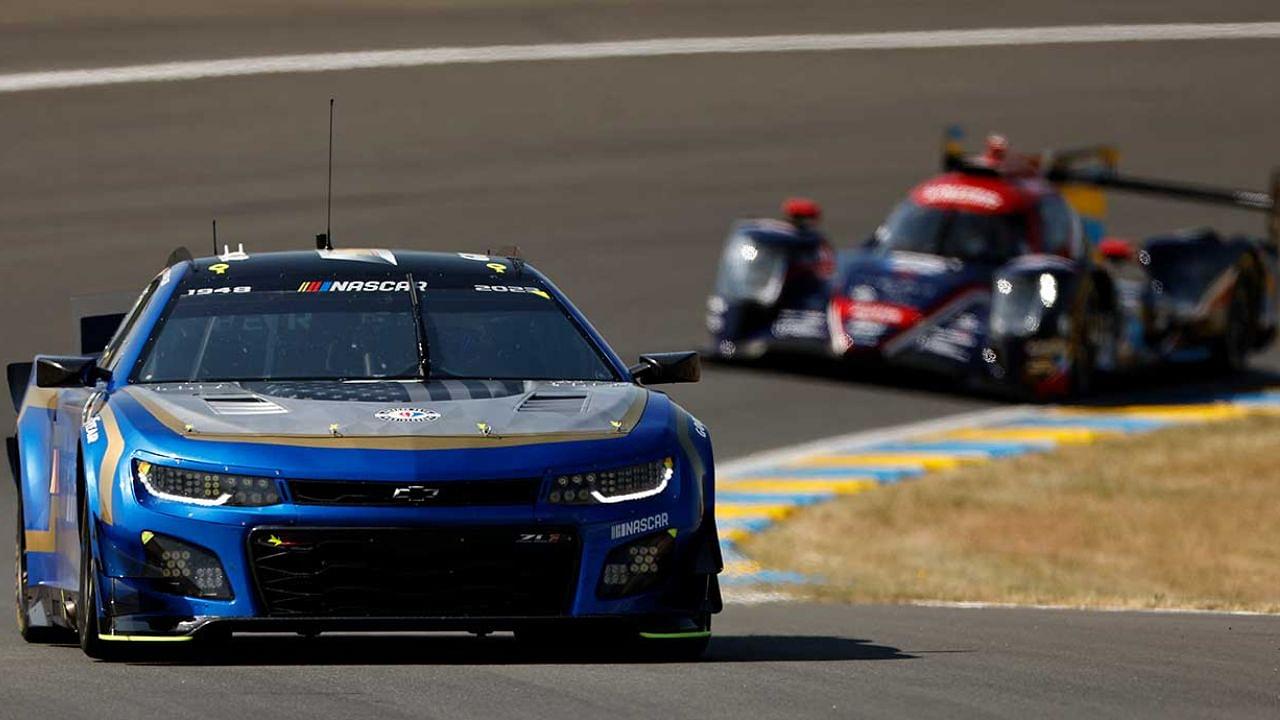The Garage 56 entry for the NASCAR Cup Series car was merely a non-competition car, which means that at the conclusion of the race, no matter where they finish, they would not be scoring points or anything. Nevertheless, it is quite impressive to see the heavily modified Hendrick Motorsports car being able to compete with the GTE Am class with ease. Since they are a non-competitive entry, the only reason to be on the track is to use the race as a “laboratory” to test their car.
Advertisement
So what is the point for NASCAR and HMS to put in so much effort for the 24 hours of Le Mans? Well, as it turns out, despite not running for position or points they have a win-win situation at their hands.
The car being run as the Garage 56 entry is a Next Gen Cup Series Chevrolet Camaro, just heavily modified with technological advancements and lower weights. By having run the full 24-hour test of endurance, the amount of data they would have collected would help both the team and NASCAR in general in the long run.
NASCAR could make use of the data to field a better road course package back home
The prevailing consensus suggests that NASCAR’s current road course package leaves much to be desired in terms of exciting race dynamics. Many have expressed the sentiment that NASCAR’s true domain lies within oval tracks rather than road courses. However, a significant shift in this perception may be on the horizon following HMS and NASCAR’s participation in the 24 hours of Le Mans.
Despite the Garage 56 entry bearing considerable similarity to its Next-Gen counterpart, there are a few key distinctions. Firstly, it employs the use of advanced carbon brakes and functioning lights, which are not typical features of a Next-Gen car. Aero upgrades, including a heightened rear spoiler, are also unique to this entry.
The car’s weight is considerably less than the regular Next-Gen car by approximately 500 pounds. This lighter framework adds to its distinctiveness and higher power-to-weight ratio. The car also substitutes the sequential floor shifter with paddle shifters, instead of sticks, among several other technical changes. Now considering that NASCAR will have all of this data on their hands, they could actually try and implement some of these new features on the cars back home.
NASCAR could try implementing a new tire sensor technology to improve race strategies
In addition to the aforementioned modifications, the Cup Series car saw the integration of a groundbreaking real-time intelligence capability for tire pressure and temperature monitoring. This feature is enabled by a passive, non-battery sensor, which is embedded into the tire during production. It is a technology known as the Goodyear SightLine, that powers this sensor, providing Hendrick Motorsports with real-time tire data during the Le Mans race.
This immediate feedback enables the team to exploit the tire intelligence data effectively to enhance the car’s performance. By adjusting the car and driver settings in real time, the team can optimize the vehicle’s performance. Goodyear also contributed to the vehicle’s adaptability by designing three types of racing tires for the 24-hour race that include dry, intermediate wet, and full wet compounds.
Once again armed with the wealth of data from this race, NASCAR could consider adding such a thing to its regular Cup Series races. This would certainly add an extra layer of predictability in terms of tire strategy for the teams. Perhaps even increase the on-track racing action and the pit stop mind games played by teams to get the upper hand over their competitors.
More importantly, this innovation could potentially open the door for NASCAR to consider wet-weather racing. The integration of functional headlights could also introduce a fresh dynamic, such as the possibility of night road course racing in the Cup Series.
Regardless of the immediate results, the collaboration between NASCAR, HMS, and Garage 56 has undoubtedly been productive. Such an experience promises to yield long-term benefits and enhance the sport’s evolution.







